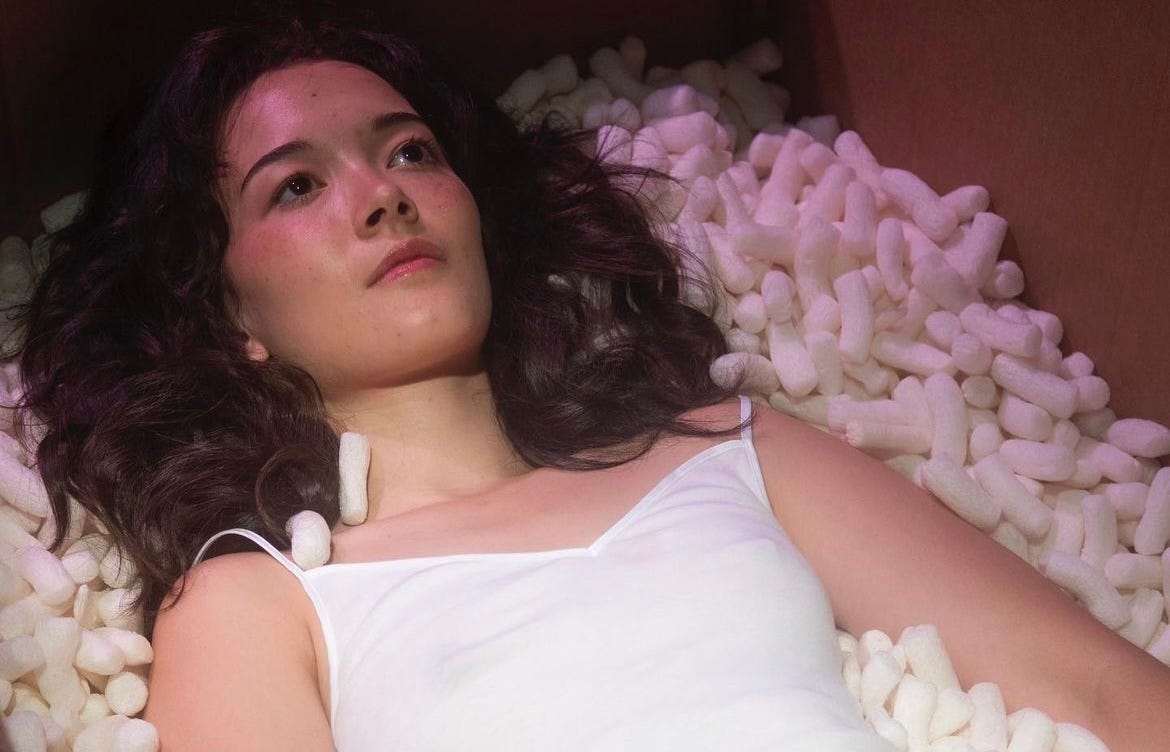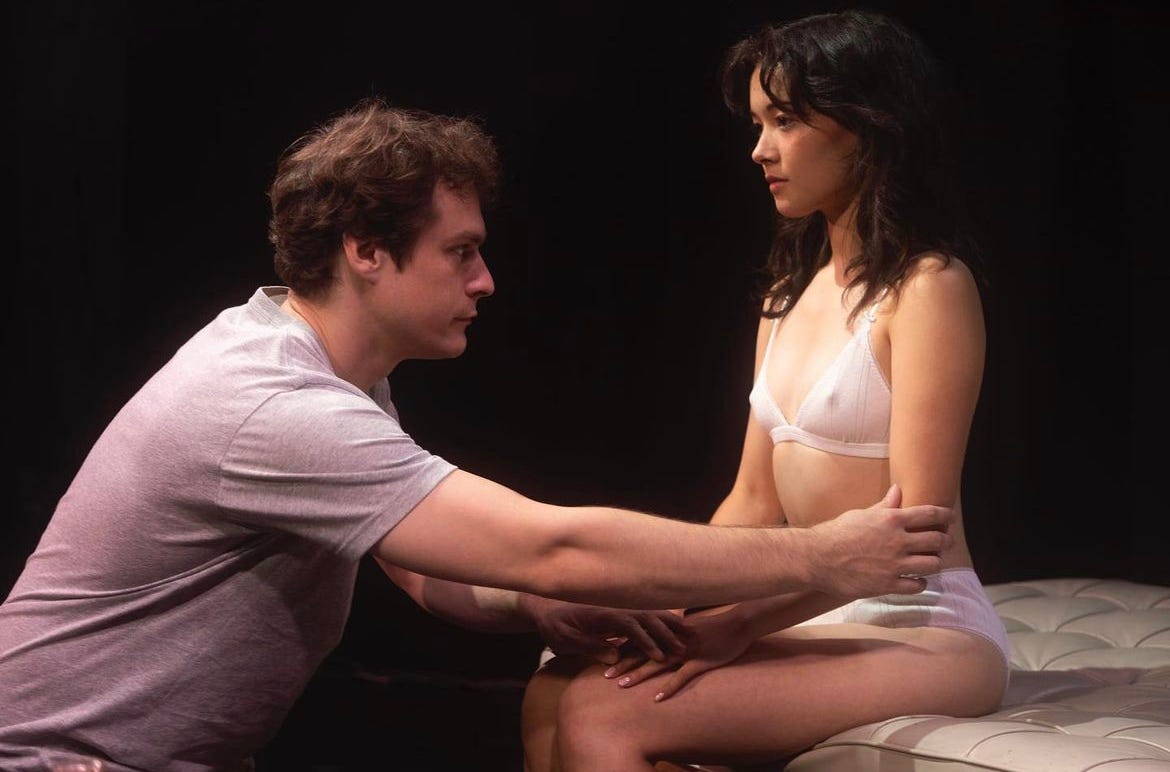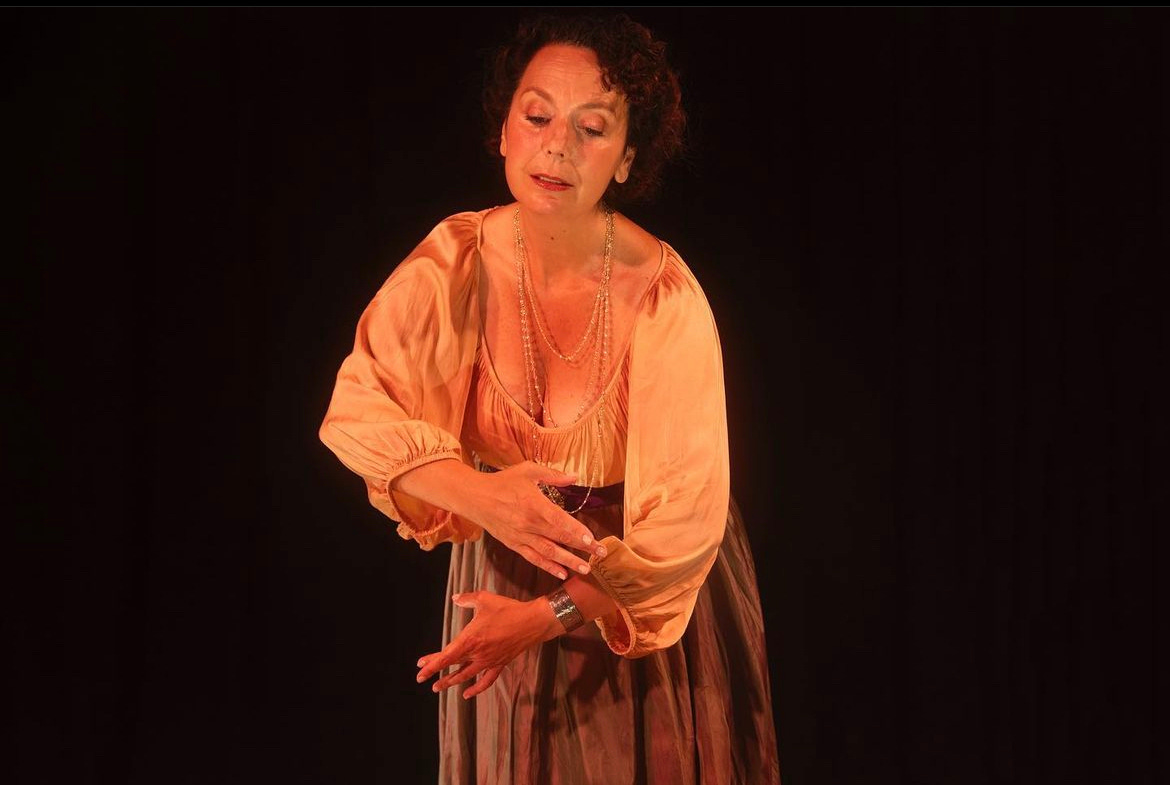Why do humans objectify? We have wrestled with the question for centuries. Sophie Dushko's new play Galatea 2.0, currently playing at the Brooklyn Art Haus, uses the myth of Pygmalion, a myth illuminating our human desire for beauty, objectification, and obsession, as a blueprint to explore human sexuality, identity, and art-making in the 21st century. And with blue Gatorade and an incel, Dushko gives us a play that smashes the classical to bring something new.
It all begins with a coin toss to determine who will play Eliza, the sex worker, and Galatea, the sex doll. The night I attended, Izabel Mar played Eliza. After the coin toss, Eliza quickly climbs into a box, turning herself into a Galatea sex doll for role-play with Henry, played by Vincent Santvoord. Henry works in tech and doesn't know how to interact with women, so he solicits Eliza for sex. Mar and Santvoord deliver nuanced performances. Mar is not afraid to make a mess on stage, which is a thrill to watch. She is rolling around in packing peanuts and, in a deep need to get to the heart of how she feels, exclaims, "I want to crawl out of this box like a bear and rise with clarity." Santvoord's awkward performance as Henry is a feature, not a bug. His character expresses a repressed sexuality of contemporary life, driving us all to live in the pod.
After the sexual role-play scene, Henry reveals his malfunctioning Galatea, played by Violet Savage. Galatea has become sexless, like much of our society. Savage's facial expressions are androgynous, and she has minimal body movements throughout the play, an impressive feat. She is an Apollonian woman, a form for us to contemplate. Her standout moment is when she breaks through with a monologue of found text from women throughout history objectified by men or the media. She references The Beatles/ Yoko Ono debate, Marilyn Monroe, and Helen of Troy. It is a monologue that is unsettling and packs a considerable punch.
Galatea 2.0 merges the past with the present. We meet Mrs. Patrick Campbell (1865-1940), played by Meg MacCary, the original Eliza Doolittle in George Bernard Shaw's Pygmalion (1912). Refusing to rely on persona, she defies the standard of other actresses of her time. She taps into something deeper within, not allowing the audience or certain playwrights to control her. Mrs. Pat keeps her composure when a fiery Shaw, played by Santvoord, berates her and Eliza. MacCary has a magnetic presence on the stage. She is steely but motherly and inviting with her fellow actors on stage. There is a nice duality found in her performance. Her English dialect is fantastic, a testament to dialect coach Sigrid Sutter.
From the crashing statues to the musical number, C.C. Kellog's direction thrills and surprises the audience. The sound design by Emma Lee Hasselbach seals the show together for me— with pre-show music consisting of Kim Petras' cover of "Human" by The Killers and songs by Lana Del Rey. I was in heaven.
The spirit and the material forms have mystified us for centuries. How do we make that compromise? Through art and civilization, we have found ways to synthesize both. In a period following the destruction of all artistic forms and trust in societal institutions is at a low point, it’s exciting to have great art trying to put the pieces back together. Galatea 2.0 chooses to construct new dolls that bring forth intricate, messy human desires.
Galatea 2.0 is playing at the Brooklyn Art Haus through July 23rd. Buy tickets here.







